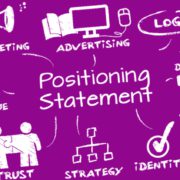In the fast-paced world of marketing, having a strong brand is often seen as the key to success. But what happens when your brand is more of a liability than an asset? At Hyve Marketing, we understand that not all brands are created equal, and sometimes, a bad brand can do more harm than good. In this blog, we’ll explore why a bad brand is worse than no brand at all and how to avoid common pitfalls that can damage your business’s reputation.
The Impact of a Bad Brand
A brand is more than just a logo or a tagline; it’s the perception that customers have of your business. When that perception is negative, it can have far-reaching consequences:
Loss of Trust
Trust is the foundation of any successful brand. If your brand fails to deliver on its promises, customers will lose trust in your business. This can lead to a decrease in customer loyalty, negative reviews, and ultimately, a decline in sales.
Poor Customer Experience
A bad brand often results from a lack of consistency in messaging, customer service, and product quality. When customers have a poor experience with your brand, they are likely to share their negative experiences with others, damaging your reputation and driving potential customers away.
Missed Opportunities
A strong brand can open doors to new opportunities, partnerships, and markets. Conversely, a bad brand can close those doors, limiting your business’s growth potential. Other companies may be hesitant to collaborate with a brand that has a poor reputation, and customers may choose competitors who offer a more positive brand experience.
Negative Word of Mouth
Word of mouth is a powerful marketing tool, but it can work against you if your brand is poorly perceived. Customers who have a negative experience with your brand are more likely to share their dissatisfaction with others, which can quickly snowball into a wider reputation problem.
Damage to Employee Morale
Your brand doesn’t just affect your customers; it also impacts your employees. A bad brand can lead to low employee morale, as team members may feel embarrassed to be associated with a company that has a negative reputation. This can result in higher turnover rates and difficulty attracting top talent.
Why No Brand Might Be Better
While having no brand at all isn’t ideal, it might be preferable to having a bad brand. Here’s why:
Clean Slate
With no brand, you have a clean slate to work with. This allows you to carefully craft a brand that aligns with your values and resonates with your target audience, rather than trying to repair the damage caused by a bad brand.
Avoiding Negative Associations
A bad brand can be difficult to shake off. Even with rebranding efforts, negative associations can linger, making it challenging to change public perception. Starting with no brand allows you to build positive associations from the ground up.
Opportunity to Strategize
Without the burden of a bad brand, you can take the time to develop a well-thought-out brand strategy. This includes identifying your unique selling points, understanding your audience, and creating a brand identity that stands out in a crowded market.
Building a Strong Brand
To avoid the pitfalls of a bad brand, focus on building a strong, positive brand from the start. Here are some key strategies:
Consistency Is Key
Ensure that your brand messaging, visuals, and customer experience are consistent across all touchpoints. This helps build trust and reinforces your brand identity.
Understand Your Audience
Take the time to understand your target audience’s needs, preferences, and pain points. Tailor your brand to meet those needs and communicate in a way that resonates with your audience.
Deliver on Promises
Your brand is only as strong as the promises you keep. Ensure that your products, services, and customer interactions live up to the expectations you set. A brand that consistently delivers on its promises will naturally build trust and loyalty.
Invest in Quality
Whether it’s your product, service, or marketing materials, quality matters. A high-quality brand reflects positively on your business and sets you apart from competitors.
Engage with Your Customers
Building a strong brand requires ongoing engagement with your customers. Listen to their feedback, respond to their concerns, and involve them in your brand’s journey. This creates a sense of community and loyalty around your brand.
In the world of marketing, having a brand is essential, but not just any brand will do. A bad brand can have far-reaching negative effects on your business, from lost trust to missed opportunities. At Hyve Marketing, we’re here to help you build a strong, positive brand that not only stands out in the market but also drives your business forward. Remember, it’s better to take the time to build the right brand than to rush into creating one that could do more harm than good.
Hyve Marketing is a full-service marketing partner, we can manage all aspects of your marketing needs: vCMO services, branding and design, website development, digital marketing, social media management, paid search, content management, photography, and video production. Contact us today for a complimentary marketing analysis of your existing brand and collateral.







